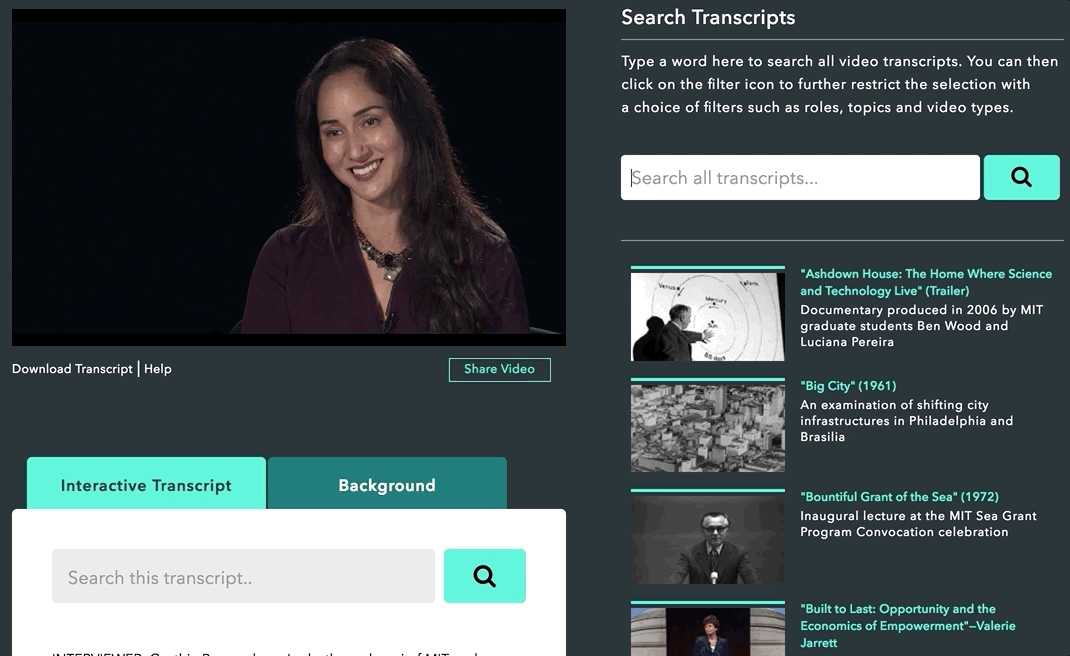7 Reasons Why Societies and Associations Should Caption Their Videos
How the ADA Impacts Online Video Accessibility [Free eBook]
Societies and associations are usually non-profit organizations that dedicate time, finances, and resources towards the advancement of an area of study or a social cause. These organizations often speak on revelatory or consequential topics, and anyone who wants to learn from them must have equal access to their content. Unfortunately, there are many cases where they don’t.
Many societies and associations are making a conscious effort to offer accessible video content with captions and transcripts, but others have not yet made a move towards video accessibility. Oftentimes, this is because organizations aren’t aware of the harm they’re causing by publishing inaccessible content.
When content is inaccessible to people with disabilities, a whole community is unable to enjoy your content. This excludes them from fully participating in society and accessing the information you share. It also inhibits you from expanding your audience to include the 1.3 billion people worldwide that live with a significant disability.
The path towards accessibility for societies and associations starts with understanding the benefits that captions can bring to your organization and to the people that it serves.
Below, we discuss some of the reasons why every society and association should caption their videos.
Captions Make Video Resources More Accessible
Many societies and associations provide valuable video resources such as online courses, webinars, and recorded conferences. Unfortunately, this content isn’t always accessible to those with hearing loss and other disabilities.
The d/Deaf and hard of hearing population is prominent; in the US alone, 48 million people in the US alone have hearing loss. Globally, 466 million individuals have some degree of hearing loss, and that number is rising. If you work at a society or association, adding accurate captions allows millions of people to access your videos.
It’s important to remember that folks with other disabilities, such as learning disabilities or neurological disorders, benefit from captions as well. Because captions give viewers two ways to consume video, they can significantly improve the viewing experience.
Captions Enhance Learning
Many societies and organizations provide educational video resources; captioning educational content can serve as a useful learning aid.
A study that surveyed over 2,000 college students found that 98.6% of respondents find captions helpful for their learning, and the majority of that group uses captions because doing so improves their comprehension. 75% of students that use captions use them as a learning aid.
The benefit of incorporating closed captions into education-focused content is that it can help viewers understand complex content centered around niche fields of research. Captioning educational content enhances the overall learning experience for the end user, and viewers who use captions may see a vast improvement in their ability to focus and comprehend and retain information. For this reason, it’s especially important that captions for education or technical videos have accurate captions.
Captions Improve User Experience and Engagement
Closed captions are often thought of as an accommodation or accessible solution for those with disabilities; however, captions can help everyone.
In addition to elevating the learning experience for viewers, captions facilitate a better user experience and promote user engagement. One research study by the University of Iowa showed that people recall information better after seeing and hearing it, and captions give your audience the option to use both senses.
It’s important to keep user experience and engagement in mind when sharing video resources; a good user experience encourages your audience to return for more resources, and optimal video engagement delivers greater value to viewers.
The simple addition of captions helps to engage your audience and reinforces the message of the video of itself.
How The ADA Impacts Online Video Accessibility ➡️
Searchability Adds Value to Gated Resources
We’ve already discussed how captions enrich the viewing experience, but for organizations that provide exclusive resources for members, adding value to video content is even more critical.
Societies and associations want to give their members a fulfilling experience, and they can do so by ensuring their video resources possess credible information and deliver a high-quality viewing experience. Adding accurate captions is a great way to provide a top-tier user experience, but interactive transcripts and playlist search bring in the additional element of search.
With the interactive transcript tool, your audience can follow an on-page, time-synchronized transcript while they watch your videos and search for topics and terms within the video itself. This allows them to jump to certain points in a video or replay a specific action to reinforce their understanding. Playlist search compiles large video and audio libraries into playlists and lets users search across your entire video or audio library. Together, these two tools create the ultimate video search experience.
Reach a Global Audience with Captions
Organizations that distribute resources on an international level must consider the diversity of their audience and the various languages they speak.
The good news is that closed captions don’t just benefit those with disabilities, they also make videos more accessible to those who speak English as a second language. Closed captions allow English-as-a-Second-Language (ESL) viewers to absorb information more efficiently by visually displaying difficult spellings and unfamiliar words. It also helps viewers reinforce their second language learning.
Even with closed captions, however, viewers who don’t speak English may still have difficulties engaging with your video content. With captions, the solution to this is simple. Once you have an English transcript, it’s easy to translate it into almost any language using a translation service. Offering captions and transcripts in many languages is an effective way to provide accessible content for global audiences.
Captions Are ADA Compliant
The Americans with Disabilities Act (ADA) is a broad anti-discrimination law for people with disabilities. Titles II and III of the ADA affect web accessibility and closed captioning. It applies to both public and private organizations.
Although the ADA doesn’t provide clear web accessibility regulations for online-only organizations, the Department of Justice (DOJ) has explicitly stated that the ADA applies to websites and that websites are subject to legal consequences if they aren’t compliant. The DOJ under the Biden administration looks to WCAG 2.1 level AA and WCAG 2.0 level AA as its accessibility standard.
Because societies and associations supply resources that are open to both private members and public audiences, they should assume that they fall under the category of “place of public accommodation.” Based on the way courts have ruled on past digital accessibility cases, these organizations should work towards accurately captioning their entire video library to avoid potential accessibility lawsuits.
Increase Organic Traffic With Captions and Transcripts
Societies and associations focusing on brand awareness and membership growth should prioritize search engine optimization (SEO) efforts. Good SEO practices will help increase your ranking on search engines and can drive organic traffic to your organization’s website.
Video SEO is essentially the same as traditional SEO in that you can optimize videos for search engines much like blog posts or product pages. Search engine bots are responsible for indexing content, but they aren’t able to watch videos. However, adding captions or transcripts allows bots to read the contents of videos and to index it appropriately.
Captioning and transcription are two of the best ways to increase video SEO. By associating accurate captions and/or transcripts with your videos, your organization can begin to drive more traffic to its website and build more awareness around its brand.
Read about how This American Life increased the number of unique visitors to its website by 4.36% with transcripts.
How Can 3Play Media Help?
The task of captioning 100% of a video library may seem daunting, especially if your organization is producing or publishing high volumes of video content. But rest assured: there are captioning solutions available that fit the unique needs of societies and associations and make the captioning process painless and rewarding.
At 3Play Media, we’re dedicated to helping our customers make their videos accessible. We offer a variety of solutions that fit the unique needs of many types of organizations, including societies and associations. These solutions include:
- Guaranteed 99% accuracy for all types of content, including complex or technical terminology
- Tools that improve the user experience, such as an interactive transcript and a searchable playlist plugin
- Legally compliant captioning and transcription practices; all of 3Play Media’s captions and transcripts are ADA compliant
- Flexible workflows that make the captioning process work seamlessly with your existing video platform
- Live captioning for conferences and events
This post was originally published in April 2019 by Jaclyn Leduc and has since been updated for freshness, accuracy, and comprehensiveness.
Further Reading

Subscribe to the Blog Digest
Sign up to receive our blog digest and other information on this topic. You can unsubscribe anytime.
By subscribing you agree to our privacy policy.







